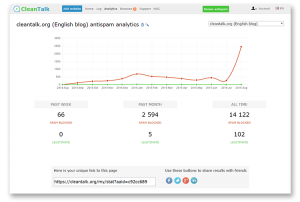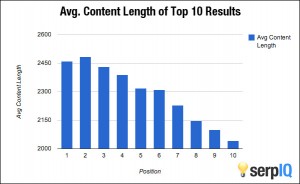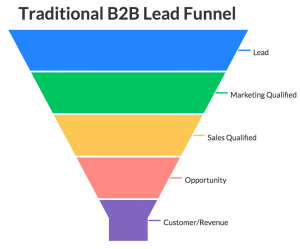Even marketing isn’t immune to Moore’s Law. Columnist Brian Massey explains how Moore’s Law has changed behavioral science, making it cheaper for marketers to create and use behavioral data than ever before.

In 2003, I wrote my first analytics package. I had the same problem all marketers had: I could do almost anything with digital marketing. I could easily create ads, pages and emails with any text, any font, any image. I could add video, animations, and even make aliens dance to sell car insurance. But how could I know which would work best for me?
Big e-commerce sites had access to sophisticated analytics packages costing thousands of dollars a month. Not me. I was spending about a quarter of my time evolving the code I wrote. I eventually released it to SourceForge as Open Source Online Marketing, or OSOM.
Then, in 2005, Google launched Google Analytics. Overnight, managing my analytics setup took just a fraction of my time. And it was free. This was my first experience of Moore’s Law in the world of behavioral data.
Apparently, we can’t shake Moore’s Law, not even those of us in the marketing and advertising game.
Quick grounding: Moore’s Law was originally defined in a 1965 paper by Gordon Moore, a co-founder of Fairchild Semiconductor and Intel. It states, roughly, that the number of transistors you could fit onto a silicon chip would double every two years. In the semiconductor world, this also meant the cost of electronics would drop by half.
Moore was talking about microchips, but what about the devices that these chips power?
In his new book, “Thank You for Being Late,” Thomas L. Friedman identifies several technologies that have ridden Moore’s Law, changing everything from wealth distribution to where we live — “we” being everyone on the globe. Think about the ready availability of inexpensive cloud storage. Think about the proliferation of sensors, many in our phones, that track epidemics or allow Waze to route us around traffic.
Friedman presents evidence that 2007 was the year that all of these trends came together, creating a “supernova” of change and innovation. It’s now 2017, and marketing has not been left out of this radical shift.
Moore’s Law effect on marketing technology
We don’t have to look at Scott Brinker’s Marketing Technology Landscape to know that marketing departments are inundated with new technologies at an astounding rate, from 150 companies in 2011 to nearly 5,000 in 2017.
I recently spoke with Joey Goldberg of Sticky, a company that offers eye-tracking and emotion-tracking services through the use of everyday webcams. What’s the amazing technology breakthrough that allows Sticky to track our eyes and measure our expressions without expensive infrared cameras? It’s the proliferation of HD-resolution cameras. The stock webcams shipped with most laptops are of such high quality that we can track the minute movements of a person’s eyes with them.
In 2012, our agency, Conversion Sciences, did an eye-tracking study to see what kinds of video would be most effective on business websites. It required an expensive camera, some sophisticated software and a couple of weeks’ work compiling all of the results. We recruited 22 visitors to come to our facility, then spent two days watching them view our videos. The results were very helpful.
Today, companies like Sticky can easily put 100 people in front of a video, an ad or a landing page in just a couple of days, delivering amazing reports right to our desktops. We don’t even have to leave our desks. Webcam technology followed Moore’s Law, and the marketing solutions followed suit.
For a recent presentation, I documented nine kinds of behavioral studies a marketer could do building just one landing page, all at a low cost and without leaving their desk. These tests include AdWords data, email performance data, preference testing from sites like UsabilityHub, heatmap data from businesses like Crazy Egg and Hotjar, and AI-driven session recording from SessionCam. We are collecting qualitative data from the likes of Qualaroo and UserTesting. And we can’t forget the power of AB testing tools.
Get used to it.
This is my new mantra: It is now cheaper to create and use behavioral data than it is not to.
Marketing has accelerated. The cost of “launch and see” is now higher than the cost of the tools and time needed to test campaigns during development. The opportunity cost of websites, ads and email campaigns that return mediocre results is too high. With inexpensive behavioral tools, we can now launch campaigns with confidence.
The real boon in all of this is for business owners, product managers, product marketing managers and P&L (profit and loss) managers. No longer is this kind of data the strict domain of UX designers.
We’ve used behavior data to determine the most profitable pricing mix for Automatic. We’ve used it to provide “redesign insurance” for companies like Wasp Barcode. We’ve used it to determine if using Amazon is as profitable as using a Shopify cart.
These are the tools of what has been called “growth hacking.” But they are no longer mysterious tools of marketing research firms. They are now a part of every manager’s arsenal.
Behavioral marketing is no longer someone else’s job.
Big companies use big data to gain an advantage. Yet the quality of your data doesn’t determine the success of your business anymore. It is the quality of your questions — because we can now answer almost any question you have with behavioral science driven by Moore’s Law.
Some opinions expressed in this article may be those of a guest author and not necessarily Marketing Land. Staff authors are listed here.
Marketing Land – Internet Marketing News, Strategies & Tips
(83)
Report Post







